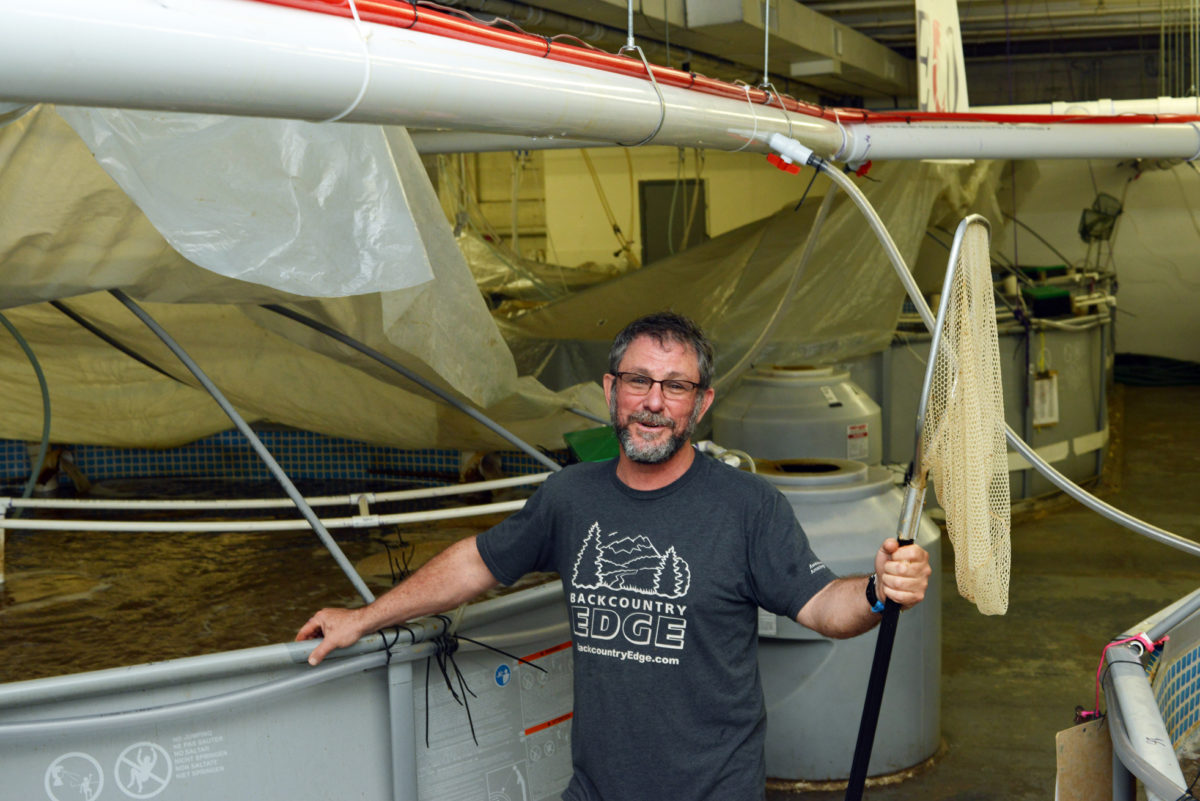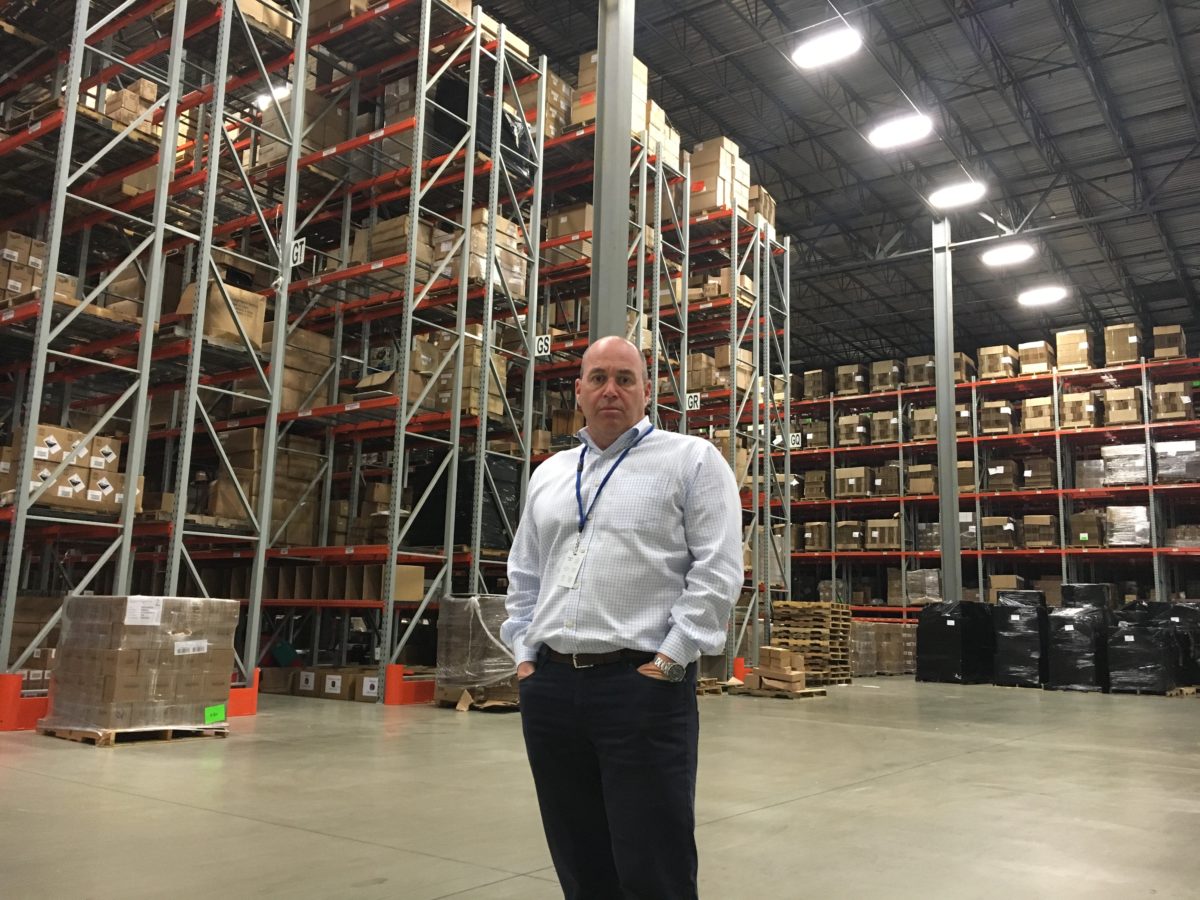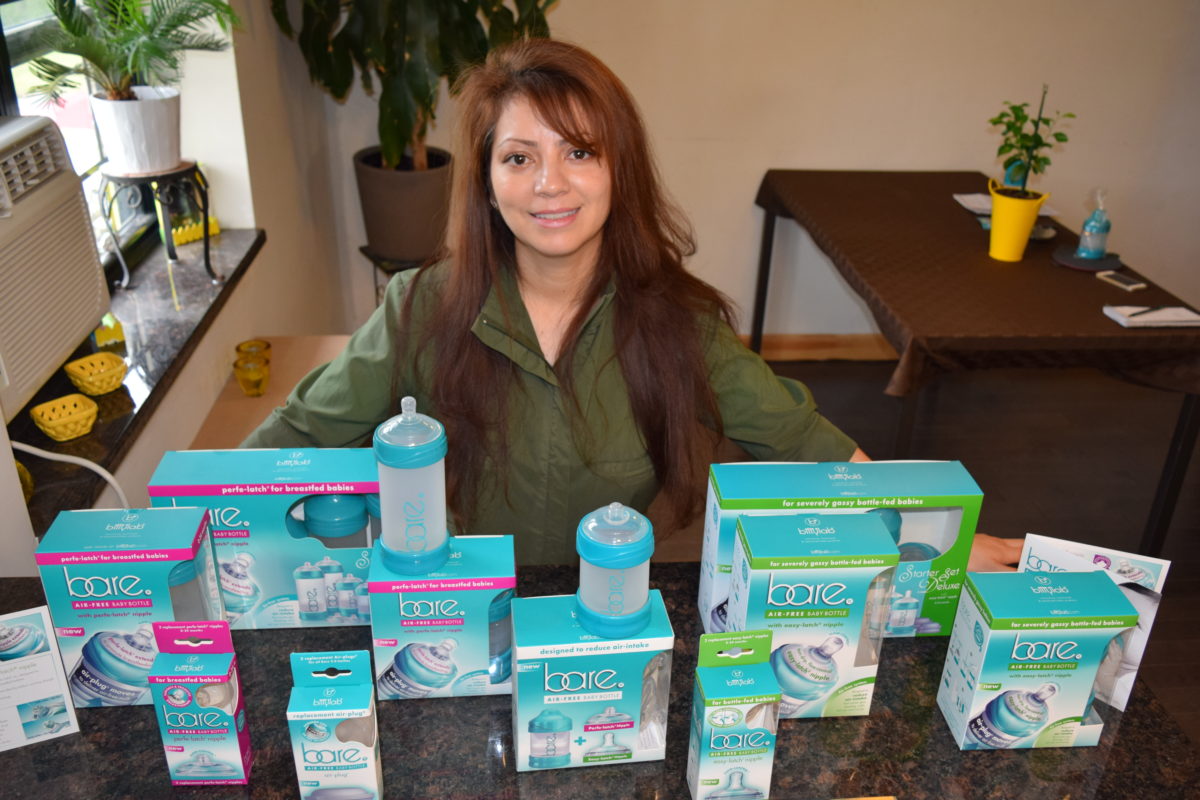America has a shrimp problem, and Jean Claude Frajmund believes he has a solution.

In September, Frajmund launched Eco Shrimp Garden, an indoor sustainable shrimp farm in an industrial corridor of Newburgh. He hopes the business can be part of a larger movement to push people away from unsustainable, imported seafood.
Despite America”™s clear love for shrimp (Americans consume almost as much of the stuff as the next two most popular seafood choices combined), the shrimp sold on shelves is not always top quality, at least according to Frajmund.
“They”™re crap,” Frajmund said. “They are all crap. 99 percent comes from Asia, South America. A lot of chemicals, antibiotics. There’s slave labor.”
About 90 percent of all seafood consumed in the U.S. is imported, with shrimp making up about 33 percent of those imports, according to Seafoodfacts.org, a collaboration between Cornell University and the New York Sea Grant Extension Program.
As for the slave labor, he”™s not exaggerating. The Associated Press won a Pulitzer Prize earlier this year for its investigation into slavery in the seafood trade in Thailand, a major exporter of shrimp. The AP series led to more than 2,000 fishermen being rescued, dozens of arrests and millions of dollars of seafood seized. In February, President Barack Obama signed into law a bill that closed a loophole and banned the import of slave-produced goods.
In January, the magazine Mother Jones published a column questioning whether Americans should stop eating shrimp altogether, citing the reports of slavery, the high carbon footprint of shrimp farming, antibiotics used to speed shrimp growth and over-fishing driven by the demand.
Frajmund”™s business offers what he says is a solution. Eco Shrimp Garden advertises fresh, never frozen shrimp grown sustainably and free of chemicals, hormones and antibiotics.
All this coming from the basement of the former Resnick”™s Mattress factory on William Street. There, Frajmund currently looks over 28 saltwater tanks, each 14 feet in diameter and four feet in depth, that produce about 350 pounds of fresh shrimp per week. He expects production to increase soon.
It will need to. Frajmund currently only sells his product once per week at the Greenmarket in Manhattan, and he says he”™s usually sold out early in the afternoon.
Frajmund has a long history with shrimp. Born in Brazil to French parents, he backpacked through his native country while he was 16 and landed in a small fishing village in the northwest of Brazil. It was there, in the 1980s, that he hooked on with a group of shrimpers. He joined fisherman who walked neck-deep along the shore at dawn and returned with 40 pounds of fresh shrimp each morning.
“This was breakfast,” he said.
When he returned to his home city of BrasÃlia, he wanted to get started right away on launching an indoor local shrimp farm. But after six months of research, he found there wasn”™t the technology he needed to do it in a sustainable way. He gave up.
Thirty years later, in 2012, Frajmund, who was living in Manhattan with his wife and kids, found an article about the concept of indoor sustainable shrimp farming. His interest was revived. Frajmund, who is fluent in five languages, started making calls all over the world to gather information. He visited five other shrimp farms, including one in England, to come up with his system.
That system involves overnighting minuscule baby shrimp, known as post-larvae shrimp in industry parlance, from a pathogen-free producer in Florida. The pathogen-free part is important, Frajmund notes. It”™s the first step of a larger chemical-free, all-natural ethos that guides the process.
The shrimp are then raised in the pools in a process that takes between three and six months in the 84-degree, extra-humid environment of the basement. The tanks replicate ocean water. No chemicals, antibiotics or hormones are used during the process. The saltwater in tanks filters biologically through a biofloc filter and is recycled throughout the facility, meaning the operation produces zero waste.
“My water bill is less than it is for many families,” he said.
Frajmund seeds a new crop of shrimp every week. That means he can harvest every week, too.
Along with three other employees, Frajmund checks water levels and feeds the shrimp each morning. Fresh shrimp are farmed out from the tanks on Fridays using a large net. They are packed on ice and driven down to Manhattan, where they are sold to customers and restaurants only hours after harvest.
Prices vary based on the size of the shrimp. The largest shrimp, called the colossal, goes for about $35 per pound. It”™s a tougher price point than shrimp off a grocery-store shelf, but Frajmund said he”™s creating a completely different product. Fresh shrimp has a sweeter taste, similar to scallops, he said, with no need for cocktail sauce.
“People are like, ”˜Man, I wasn”™t eating shrimp anymore,”™ and now it”™s like, ”˜Wow, I can eat shrimp,”™” he said. “It”™s not only better quality, the taste is totally different.”
By 1 p.m. at the market, odds are a lot of disappointed customers will be sent home with empty coolers.
“The demand is gigantic,” Frajmund said. “I can sell 10 times more than what I produce.”
 Frajmund is only using about a third of the 30,000-square-foot basement space. His operation will soon use more of that space to run 90 tanks and produce 100,000 pounds of shrimp per year. He is set up to produce about 16,000 pounds per year.
Frajmund is only using about a third of the 30,000-square-foot basement space. His operation will soon use more of that space to run 90 tanks and produce 100,000 pounds of shrimp per year. He is set up to produce about 16,000 pounds per year.
But he”™s not interested in building up a huge commercial operation. He said there”™s a limit to the method.
“The Eco Shrimp Garden concept is to have small units close to consumer markets,” he said. “We have to keep the three things we love: sustainable, local, and fresh, never frozen. So if we expand, I don”™t want a gigantic building with a thousand tanks. That doesn”™t make sense.”
There are about 30 indoor shrimp farms in the country, but Frajmund said he”™s the first to try to create one in an urban area. For that, Newburgh was the perfect fit.
“I”™m a city guy, I like to be able to go to the corner and get a sandwich,” Frajmund said. “And here you have architectural beauty, and it”™s a real city ”” not just Main Street.”
The shrimp garden has been seen as a heartening development for Newburgh as it attempts to revitalize unused industrial space. The day Eco Shrimp Garden opened, the city held a reception that featured a speech from Mayor Judy Kennedy and appearances by U.S. Rep. Sean Maloney, state Sen. Bill Larkin and Assemblyman Frank Skartados.
Frajmund recalls seeing coverage of the event on the news later that night.
“The opening of the news was ”˜Newburgh: the shrimp capital?”™” Frajmund said with a laugh.
He said he”™s happy to be generating positive headlines for the city.
“There”™s something happening here,” Frajmund said. “There are a lot of problems, yes, but there is a lot of quality as well.”
Meanwhile, he said the early demand has proved that urban, sustainable farming can work in the seafood sector.
“We are proving the concept is there,” Frajmund said. “But it”™s a society decision, not one only for Washington and Albany. We can say we won”™t buy this crap shrimp anymore, and instead we will put $6 billion a year right here that America right now just sends out.”






















